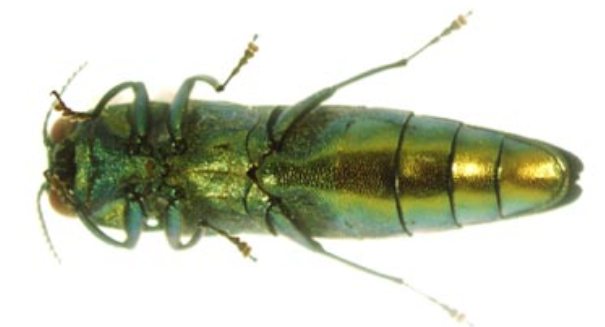
A researcher at Wright State University suggests that the emerald ash borer, known to destroy ash trees across the nation, may have moved on to the white fringetree.
A statement released Friday by Wright State University reveals that the emerald ash borer, a beetle destroying ash trees throughout the nation, is suspected of spreading to a different tree species.
Don Cipollini, biology professor of Wright State University and director of the school’s Environmental Sciences Ph.D. Program, found that the emerald ash borer has apparently made the transition to attacking whit fringetree, which is native to the United States and grows wild from New Jersey to Florida and west to Oklahoma and Texas.
“It appears that emerald ash borer is eating more than ash trees,” said Cipollini. “It may have a wider host range than we ever thought in the first place, or it is adapting to utilize new hosts. This biological invasion is really something to worry about. It’s having drastic ecological and economic consequences, and you can’t always predict what’s going to happen.”
Phys.Org reports that the emerald ash borer is native to Asia and was introduced to the United States near Detroit in 2002. The beetle has already killed tens of millions of ash trees so far and threatens to cause $10 billion in economic damage by 2019. Efforts to save the ash trees include pesticides being injected into the trunk and parasitoid wasps whose larvae kill the borer larvae.
“But it’s hard to stop this thing because the borer has reached such high densities,” said Cipollini. “And it is now spreading to parts of the country where white fringetree grows.”
According to the statement, Cipollini was examining white fringetrees planted by the Yellow Springs Tree Committee near his home in southwestern Ohio when he spotted borer exit holes on one of the trees. With permission from the committee to peel back the bark, he discovered a feeding gallery of emerald ash borer that began at least two years ago.
“Based on the larval morphology alone, I’m confident that this will turn out to be emerald ash borer,” said Cipollini. “There was a good paper that was published two years ago describing the physical characteristics of emerald ash borer larvae, and this meets those that I can determine. If it turns out not to be emerald ash borer, it has to be a close relative and likely non-native. And so it would still be a concern for the same reasons as emerald ash borer.”
Entomology Today reports that Cipollini will present his findings to the Animal and Plant Health Inspection Service on Oct. 15, and the researcher warns that if the emerald ash borer destroys white fringetree, the birds, insects, and wildlife dependent on the tree’s leaves and fruit may also be in danger.
“It’s one of these unexpected consequences of biological invasions,” said Cipollini. “Even when you think you have a handle on something and you understand what it does and what it may cause, these kinds of surprises pop up.”
Leave a Reply